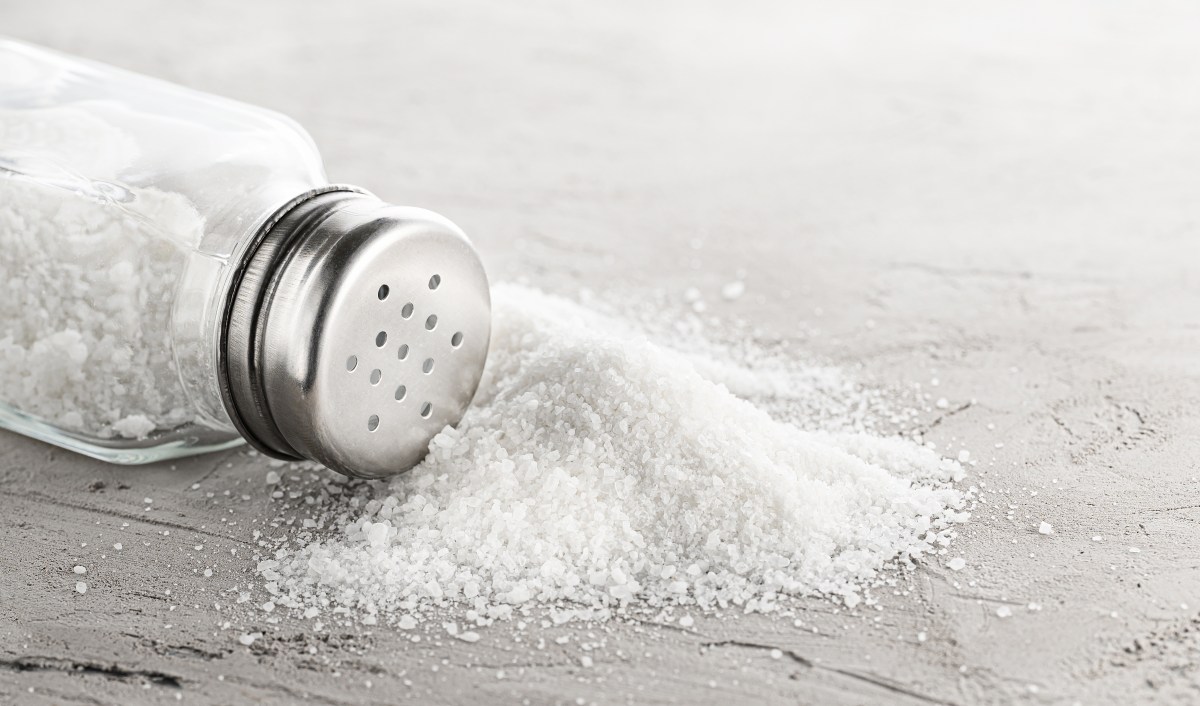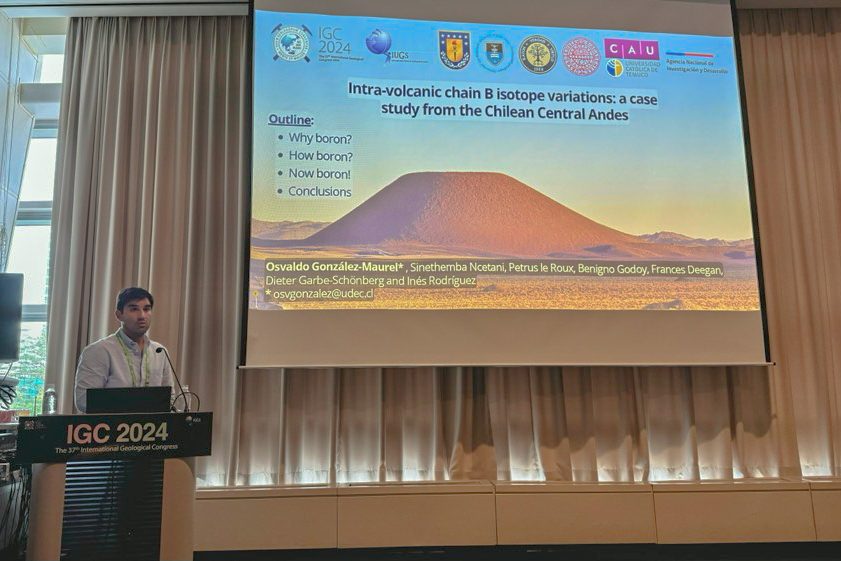This scientific meeting is held every four years and brings together specialists from around the world in a wide range of Earth sciences, specialties and sub-disciplines.
In this context, the academic from the Department of Earth Sciences at the Faculty of Chemical Sciences at the University of Concepcion said: Dr. Osvaldo Gonzalez Morell He presented three works, two in poster form and the third through a lecture entitled “B-series isotope variations within volcanoes: a case study from the Chilean Central Andes” He provided an account of some of the key results of the project ‘FONDECYT 1240153 – How much water is in the crust? Deconstructing the current upper crustal hydration state in the central Andes, northern Chile, Which he is a co-investigator on.
This initiative is led by your colleague Dr. Benigno Godoy Neira from the University of San Sebastián and is funded through the regular line of the Fund for the Development of Science and Technology (Fondecyt) of the National Research and Development Agency (ANID).
The intergovernmental conference is one of the most important scientific meetings in the field of earth sciences in the world, as it was held in South Africa in 2016 and in India in 2020, although its attendance was suspended due to the health emergency resulting from the Covid pandemic. . Meanwhile, the 2028 edition will be held in Canada.
“The geoscientific community comes together for this big event that looks like the World Championships or the Geology Olympics. Hence the importance of this conference and that is why we decided that we had to showcase the progress we have made in this particular place,” commented Dr. González Morell, specialist in igneous petrology, isotopic geochemistry and volcanology.
Possible future cooperation
“We talked at length about what each of us does, and in the end, he invited me to hold a seminar on the work my colleagues and I have been doing for nearly 10 years. It was something unexpected, and I of course accepted, which meant I had to extend the visit a little longer so as not to Don’t miss this opportunity,” commented Gonzalez-Morrell and emphasized that “I had the opportunity to visit the campus, get to know some of the departments and their laboratories, in addition to teaching the seminar, and discuss future research projects in which we can collaborate closely.”

He commented: “I am very happy, and it is gratifying, that your work is being recognized and validated abroad, and also, in part, the idea of this kind of conference. It is very enriching to have the opportunity to attend these “mega-scientific events.” They always They leave things up to you from a professional and personal standpoint.”
Boron and its role in volcanic formation
“With Benigno and many other colleagues from different national and international universities, we have been working for almost 10 years. “We mainly focus on modern volcanic products in northern Chile,” explains Dr. González Morel. “And through different projects, we have been progressing step by step.” In understanding the evolution of magma in the region. At the moment, we are devoting ourselves to investigating the hydration conditions of magma and how the associated fluids behave.
In this context, studying the elemental and isotopic concentrations of boron in volcanic rocks is essential to understanding the behavior of the element throughout the entire magma cycle, i.e. from its inception until its eruption. “Boron is an ideal geochemical tracer for studying the addition of fluids from subducting oceanic crust to the upper mantle and the transport of fluids across continental crust. Boron’s affinity for magma and fluids, combined with its low fractionation in the Earth’s crust, allows us to detect and measure exchange processes between different magma reservoirs.”
Moreover, he comments that one of the main results recorded so far in this type of research concerns “the surprising diversity of this chemical element on a local scale, even within the same volcanic series.”


“Social media evangelist. Student. Reader. Troublemaker. Typical introvert.”







More Stories
“Those who go to museums but do not see an oak tree in the countryside should blush.”
Michoacana Science and Engineering Fair 2024, When the Call Ends – El Sol de Zamora
Dr. Miguel Kiwi, winner of the National Science Award, gives his opinion on nanoscience in Chile